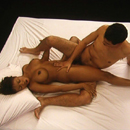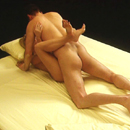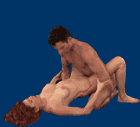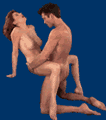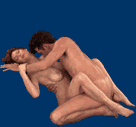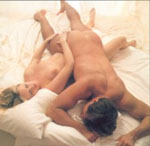
Breast cancer is the second most commonly occurring type of cancer in women in America. Moreover, it is the most common cancer diagnosed among Canadian women. Although the disease is not completely understood by researchers, it is known is that early detection along with minimizing risk can decrease the probability of developing and suffering from it. The methodology of performing a breast self-exam is straightforward and will be detailed thoroughly in this article.
What is Breast Cancer?It is defined by the National Cancer Institute as “cancer that forms in tissues of the breast, usually the ducts (tubes that carry milk to the nipple) and lobules (glands that make milk)”. Although breast cancer does occur in men, the probability is very low.
Why Do a Breast Self-Exam?Conducting regular breast self-exams is important for a number of reasons. Early detection and treatment may save your life. Studies show that finding and treating breast cancer in its early stages can prevent death from this disease. The breast self-exam is quick, free, easy to perform, and does not require any outside assistance. Getting into the practice of regular self-exams will familiarize you with your breasts and improve awareness of any irregular changes in the tissue.
Risk FactorsEliminating risk factors and embracing protective factors are also extremely important. It is recommended that women over the age of forty should have a breast examination with a trained health professional at least once every two years; however, if you present a higher than normal set of risk factors, the breast self-exam becomes even more of a priority and screening with a trained clinician also may need to occur more frequently.
High risk factors include, but are not limited to, the following: gender (because 99% of those affected by breast cancer are women), age, having a close relative with an incidence of this disease, obesity (as defined by the Body Mass Index measurement), experiencing Menstruation before the age of twelve or menopause after the age of fifty five, having a first baby after the age of thirty - or never at all, never breastfeeding, and taking Hormone Replacement Therapy (HRT).
Moderate risk factors are those that less consistently increase the risk of cancer, or are suspected as possible contributors. Moderate risk factors generally relate to lifestyle choice, such as: smoking tobacco products, drinking more than one drink of alcohol per day, physical inactivity, eating a diet lacking in fruits and vegetables, and using Birth Control products.
What to ExamineCheck the entire breast area, which includes the breasts, armpits, around the side of the chest, and along the tissue all the way up to the collar bone. Look at your breasts in the mirror rather than looking down at them. If you have larger breasts, make sure to lift them up and inspect the underside.
The Visual InspectionA mirror in a well lit area is required for a visual inspection. Arrange yourself in front of it and look straight ahead. Perform your visual examination using all of the following body positions: sitting, standing, arms over the head, hands on hips, and leaning forward. Take a moment to look at your breasts in the mirror while in each of these positions from a side angle. These arrangements may seem like a lot of work but there is a purpose; they will change the way the breasts hang and will increase your chance of spotting any abnormality.
Look at your breasts and take note of the skin texture, shape, size difference, and contour of the nipple. Take note of anything that has changed in size, shape or skin texture. Don’t worry about any asymmetry or imperfection! The key thing is to look for is any deviation from what is usual for you, which is why it is important to perform this examination regularly. Study the breasts’ profile from every angle and take not of any unusual bulges or lumps that appear to stick out. Also, pay attention to any dimpling or puckering of the skin.
The Manual InspectionThe key to successful execution of the manual portion of the breast self-exam is frequent practice. Being familiar with what breasts normally feel like will give you insight into what is actually abnormal. The main things to feel for are bumps, lumps, thickening of the skin, and/or pain. It is possible that you sense better with one hand rather than the other, so compare what you feel with each hand with the other breast as a double-check or reference point.
Women’s breast tissue is normally somewhat thick and lumpy, but the degree of variation differs from person to person. Some people think that they won’t be able to distinguish what is normal from what is abnormal. Familiarizing yourself with the elements that make up the breast area, such as fat tissue, muscle, bones, lymphatic system and ducts, will help you feel more comfortable as you inspect it. It takes some practice but you will be able to differentiate a change in your tissue.
To conduct the manual breast self-exam, use the soft pads of the three middle fingers of the opposite hand of the breast that you are checking. Keep the fingers together as you apply pressure to the areas you’re inspecting. Utilize enough pressure so that you don’t skim over a lump but be careful not to press too hard as it’s possible to push a bump away from the area that you’re feeling. The motion of the fingers is always circular; place them on the skin, press gently, and rub in a circular motion until you feel satisfied that the area has had a good assessment.
Inspection PatternsThere are a number of patterns that can be used specifically to scan the breast area. These should be done while you’re in the standing position, as well as when you’re lying down on your back, and/or lying down on your side. This allows your breast tissue to shift so that you can feel the area more successfully. Experiment with all of the movements using the finger motion described in the last paragraph and choose the inspection pattern that feels most effective and comfortable. Remember to check the armpits, as well as the chest area underneath the collarbone.
Using the circle pattern, start at the outermost point of the breast and work your way around the perimeter of the breast. Once you reach the point where you started, close your circle in about an inch or so and go around the breast again. Continue with this pattern, making your rings smaller and smaller until you finally reach the areola. Repeat this on the other breast with the opposite hand.
With the clock pattern, visualize the breast with an imaginary clock on it. Starting at the outer edge of the breast where twelve o’clock would be, use your circular finger motion to examine the area of the breast along the path of a straight line toward the nipple area. Repeat this step as many times as necessary until you’ve checked over the clock face. Repeat this process on the other breast.
The last configuration, commonly called the grid pattern, involves moving your fingers up and down in columns from the top to the bottom of the entire breast. Starting at the breast tissue closest to the sternum, use your circular finger motion to sweep up and down across the grid until you reach the other side. Don’t forget to lift up the breast to inspect its underside. Some women prefer to use the grid pattern because it is an easier method of detecting changes in the breast tissue. The grid pattern starts from the area closest to the sternum, which contains the least amount tissue, and works towards the armpit, containing the thickest tissue.
PointersA helpful tip is to choose your preferred interval (once a month, once every two months, etc.) and mark it on your calendar. If your periods are irregular, if you don’t have periods any longer, or if you’re pregnant, do the breast self-exam on the marked day; adjust your day if you need to accommodate your menstrual cycle. Check your breasts about a week to ten days after you start your cycle so that they aren’t as tender. Try to stick to a consistent schedule so that you can detect changes that develop slowly.
One of the easiest and most convenient ways to manually inspect your breasts is while you’re in the bath or in the shower. Wet and soapy hands glide easily across the breasts and the fingers are also more sensitive. Lotion or personal lubricant can be used as a substitute if you prefer to check yourself outside of the shower.
When to Report to a Health Care PractitionerIf you experience any new or atypical pain, or notice any difference in size, shape, or texture of your breast, report to your health care practitioner. Additionally, if you notice any changes in the nipple area such as redness, leaking, dimpling, or puckering, be on the safe side and tell your doctor.
Is There A Downside To Performing A Regular Breast Self-Exam?Unnecessary worry or anxiety is something you need to manage carefully. Some people prefer to avoid regular doctor’s checkups and self monitoring because they’re so afraid of coming across something unwanted. This method keeps you in the dark about your changing body and eliminates any possibility for timely intervention. For those who are fearful, consider the following fact; 80% of all breast changes are not cancerous!
Some people might also be concerned with the costs associated with extra doctor visits. It may feel frustrating to experience fear and unnecessary expense only to find out it was all a false alarm; however, be assured that a false alarm is the best outcome possible. The more that you keep in tune with your breasts, the better you will become at spotting the difference between irregularities and normal fluctuations.
Final ThoughtsThere is no guarantee that a breast self-exam alone lowers breast cancer death rate. The most effective way to protect yourself is by managing all risk factors, keeping in touch with the changes in your breasts, and attending regularly scheduled check-ups with your doctor. It should be an integral part of your overall Breast Health awareness.
乳腺癌是第二个最常见类型的癌症发生在美国的妇女。此外,它是最常见的癌症诊断中的加拿大妇女。虽然这种疾病的研究人员没有完全理解,但知道的是,随着最低风险可以降低开发的可能性,并从它的痛苦的早期检测。在执行乳房自我的方法,考试非常简单,将在本文中详细彻底。
什么是乳腺癌?它的定义是由美国国家癌症研究所的“癌症在乳腺组织形式,通常是管道(管所携带牛奶乳头)和小叶(腺体,使牛奶)”。虽然确实发生乳腺癌,男性的概率非常低。
为什么乳房自我考试?
定期进行乳房自我考试是很重要的一个原因。早期发现和治疗可以挽救你的生命。研究表明,发现和治疗早期阶段乳腺癌可以防止这种疾病死亡。乳房自我检查是快速,自由,容易执行,并且不需要任何外部援助。获取到定期自我实践考试将熟悉你的乳房你和改善在组织中的任何不规则的变化的认识。
风险因素消除危险因素和拥抱保护因素也是非常重要的。我们建议对40岁的妇女应该有一个训练有素的医疗专业,至少每两年一次,但是,如果你提出一个高于正常的风险因素集,乳房自我检查变得更加的乳房检查一个优先事项和训练有素的临床检查也可能需要更频繁地发生。
高风险因素包括,但不仅限于以下方面:性别(因为99受影响的乳腺癌%是女性),年龄,具有与此种疾病的发病密切相关,肥胖(如身体质量定义指数衡量),经历前12或更年期月经后的55岁,后有30岁的第一个孩子 - 或从未所有,没有母乳喂养,并采取激素替代疗法(HRT)。
中等风险的因素,是不一贯增加患癌症的风险,或者尽可能贡献者怀疑。中度危险因素,一般涉及到生活方式的选择,如:烟草制品,超过每天酒精饮料,缺乏体力活动饮酒,饮食中缺乏水果和蔬菜,并使用控制产品的诞生。
怎么检查检查整个乳房地区,其中包括乳房,腋窝围绕胸部一侧,并沿着组织一路到锁骨。看看你的乳房的镜子,而不是看着他们失望。如果您有较大的乳房,一定要解除他们和检查的底部。
在视觉检测一个良好的光线充足的地方,需要镜子的目视检查。排列在它前面自己,直视。执行您的视觉检查使用所有下列机构的职位:坐,站立,在头部,手放在屁股上的武器,并前倾。花点时间看看你的乳房的镜子而在一侧的角度,从每个职位。这些安排看起来似乎很多工作,但有一个目的,他们将改变乳房挂起,并会增加你的点滴出血任何异常的机会。
看看你的乳房,并采取的皮肤纹理,形状,大小的差异,并注意到乳头轮廓。考虑到任何有大小,形状或皮肤纹理改变注意。不要担心任何不对称或不完美!关键是寻找可对你是平常,这就是为什么它是重要的,定期检查执行此偏差。从各个角度研究乳房'形象和不采取任何不寻常的凸起或肿块出现伸出。同时,注意任何压痕或皮肤蹙起。
该手册检查至于对乳房的自我手册成功执行的关键部分,考试频繁的做法。正在与乳房通常喜欢什么给你到什么是真正的洞察力感到异常熟悉。主要的东西都感到颠簸,肿块,皮肤增厚,和/或疼痛。很可能你感觉更好地用一只手,而不是其他,所以你比较彼此与其他乳房手感双重检查或参照点。
女性的乳房组织通常有点厚块状,但变异程度因人而异有所不同。有些人认为,他们将无法区分什么是正常的,什么是正常的。熟悉的元素构成,如脂肪组织,肌肉,骨骼,淋巴系统和乳腺导管地区,自己,会帮助你感觉更舒服,你检查它。这需要一些练习,但你可以在您的区分组织变化。
为了进行手动乳房自我检查,使用的三个乳房的检查,你是相反的手中指软垫。保持手指在一起,你施加压力,你的地区视察。利用足够的压力,让你不掠过一笔,但小心不要逼急了,因为它有可能推动该地区的你感觉撞了。手指的运动始终是圆形,发生在皮肤上,轻轻地按他们,并在圆周运动揉搓,直到你感到满意,该地区已经有了一个良好的评估。
检查模式有一些数量的模式,可专门用于扫描乳房地区。这些应该做的同时你在站立,以及当您躺在你的回落,和/或躺在你身边了。这使你的乳房组织转移,以便您可以感受到这方面做得更加成功。实验与使用手指的议案的最后一段所述的所有动作,并选择检查模式,认为最有效和最舒适的。记住要检查腋窝,以及在锁骨下胸部。
使用循环模式,在乳房的最外层点启动,并围绕乳房周围的路。当您达到您的点开始,关闭循环,大约1英寸左右,到处去乳房了。继续这种模式,使您的戒指越来越小,直到你最终到达乳晕。重复此相反的手与其他乳房。
随着时钟模式,可视化与它想象时钟乳房。在乳房外缘开始在十二点钟会,用你的手指运动圆形审查沿一对乳头区直线路径乳房区。重复此步骤,直到你在钟面签根据需要多次。重复此过程的其他乳房。
最后的配置,通常称为网格模式,涉及从顶部移动您的手指,然后在列到整个乳房的底部。开始在乳房组织最接近胸骨,用你的手指运动的圆形打扫和整个网格,直到您到达对方。不要忘记抬起乳房检查其底部。一些妇女喜欢用的方格图案,因为它是检测乳房组织的变化容易的方法。网格模式开始从该地区最接近胸骨,其中包含最少的组织,并努力腋下工程,其中最厚的组织。
指针一个有用的技巧是选择您的首选区间(每月一次,每两个月一次,等),标记在您的日历中。如果你的月经不规则,如果你没有任何时间较长,或者如果你怀孕,做标记的一天,乳房自我检查,调整您的一天,如果您需要容纳你的月经周期。大约一个星期检查你的乳房到10天之后您启动您的周期,使他们不为招标。尝试坚持一贯的时间表,以便您可以发现变化的发展缓慢。
最简单,最便捷的方法来手动检查你的乳房之一是当你在洗澡或淋浴。潮湿和肥皂的手很容易滑动乳房上的手指也更敏感。乳液或个人润滑剂可以作为替代,如果你喜欢检查淋浴以外的自己。
当向健康护理师如果您遇到任何新的或非典型疼痛,或通知任何大小,形状,或乳房质感的差异,报告您的健康护理医生。此外,如果您发现有发红任何乳头面积的变化,泄漏,压痕,或蹙起,是为了安全起见,告诉你的医生。
是否有负面的执行一个定期乳房自我考试?不必要的担心和焦虑是你需要小心管理。有些人喜欢以避免定期医生的检查和自我监督,因为他们已经习惯了一些不必要的跨越未来害怕。这种方法保持了有关您的身体变化,消除黑暗您及时干预的任何可能性。对于那些谁是可怕的,考虑以下事实,80%的乳房变化不会发生癌变!
有些人可能还关心额外就医的费用。它可能会感到沮丧,体验恐惧和不必要的开支,却发现这一切都是一场虚惊,但得到保证,是虚惊一场是最好的结果可能。越多,你必须与你的乳房调整,更好你将成为擅长发现违规行为之间的差异和正常的波动。
最后的思考没有任何保证乳房自我检查仅降低乳腺癌死亡率。最有效的方法保护自己所管理的各种风险因素是,在保持联系与您的乳房的变化,以及出席定期检查与您的医生起伏。这应该是你的整体乳腺健康意识的一个组成部分。













